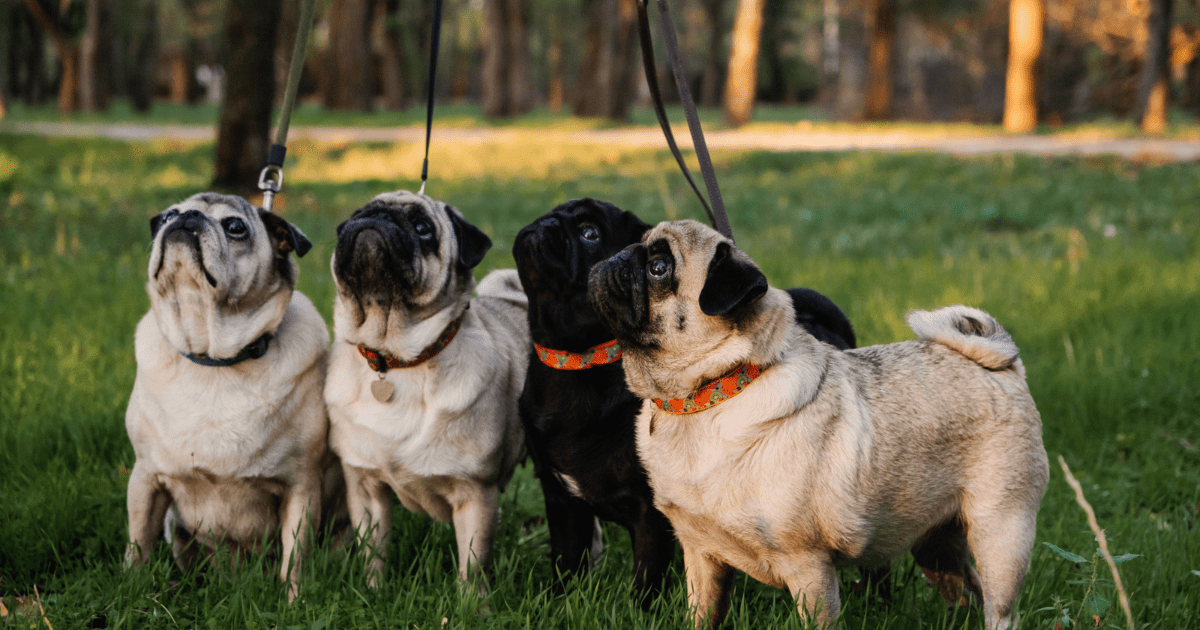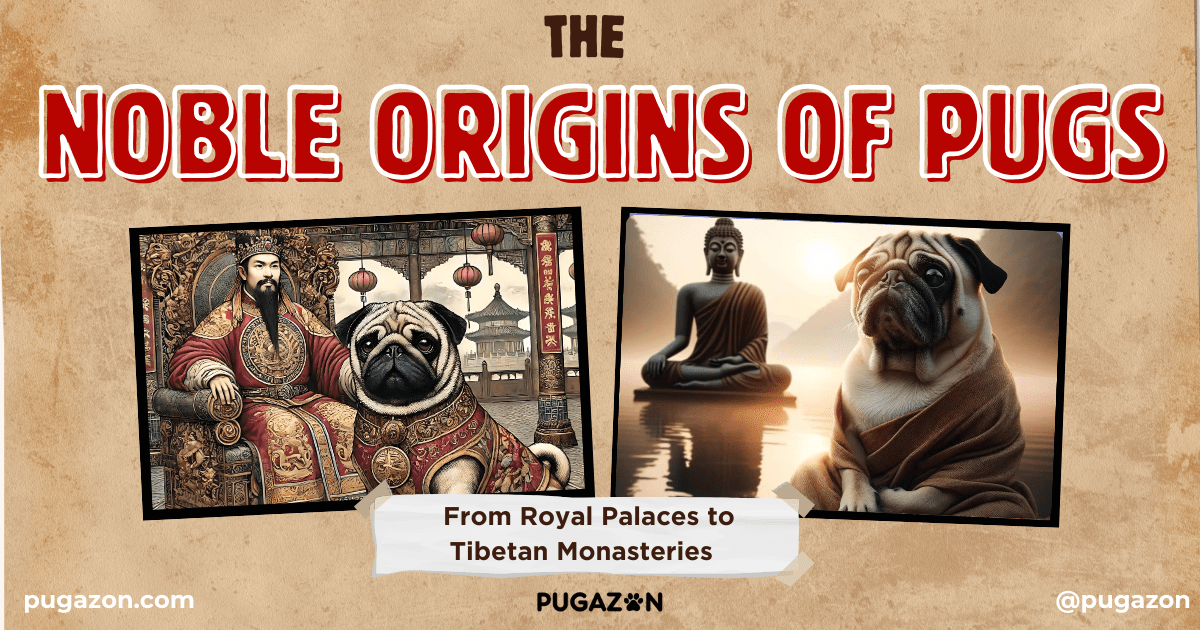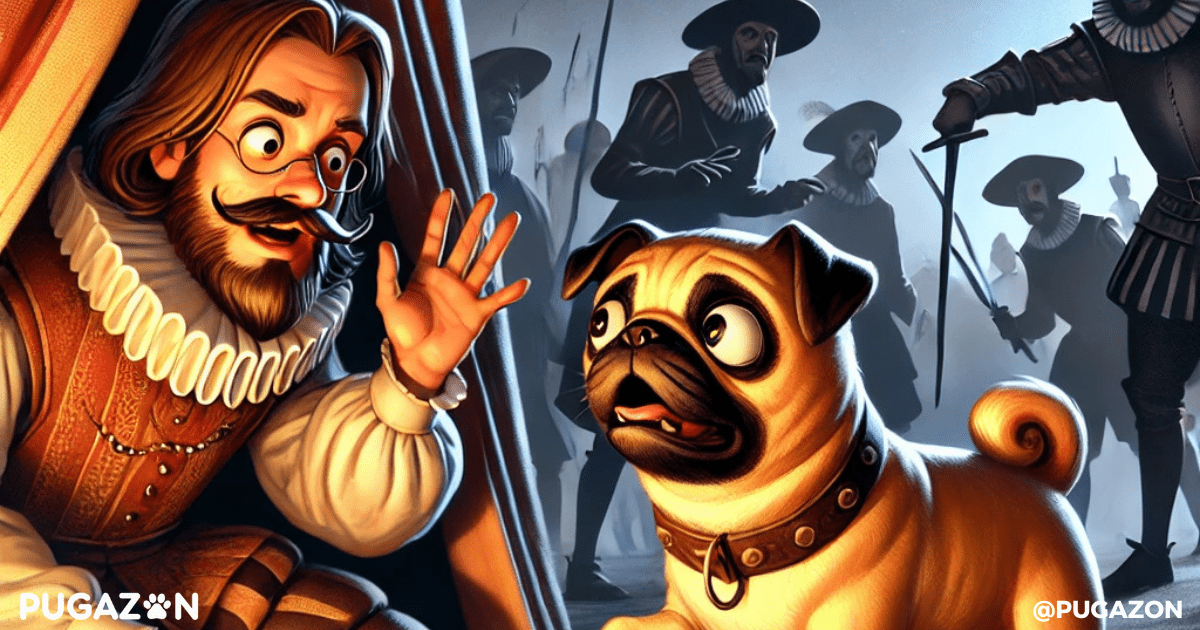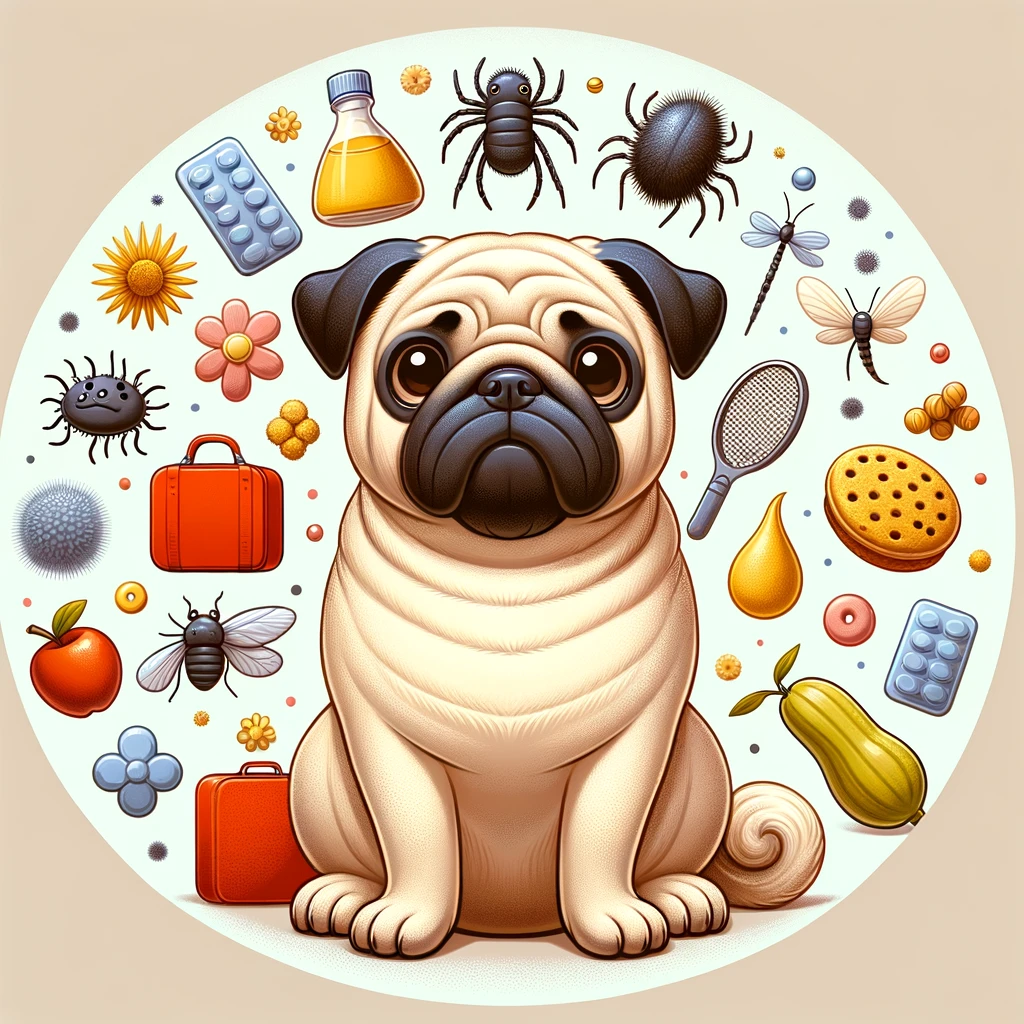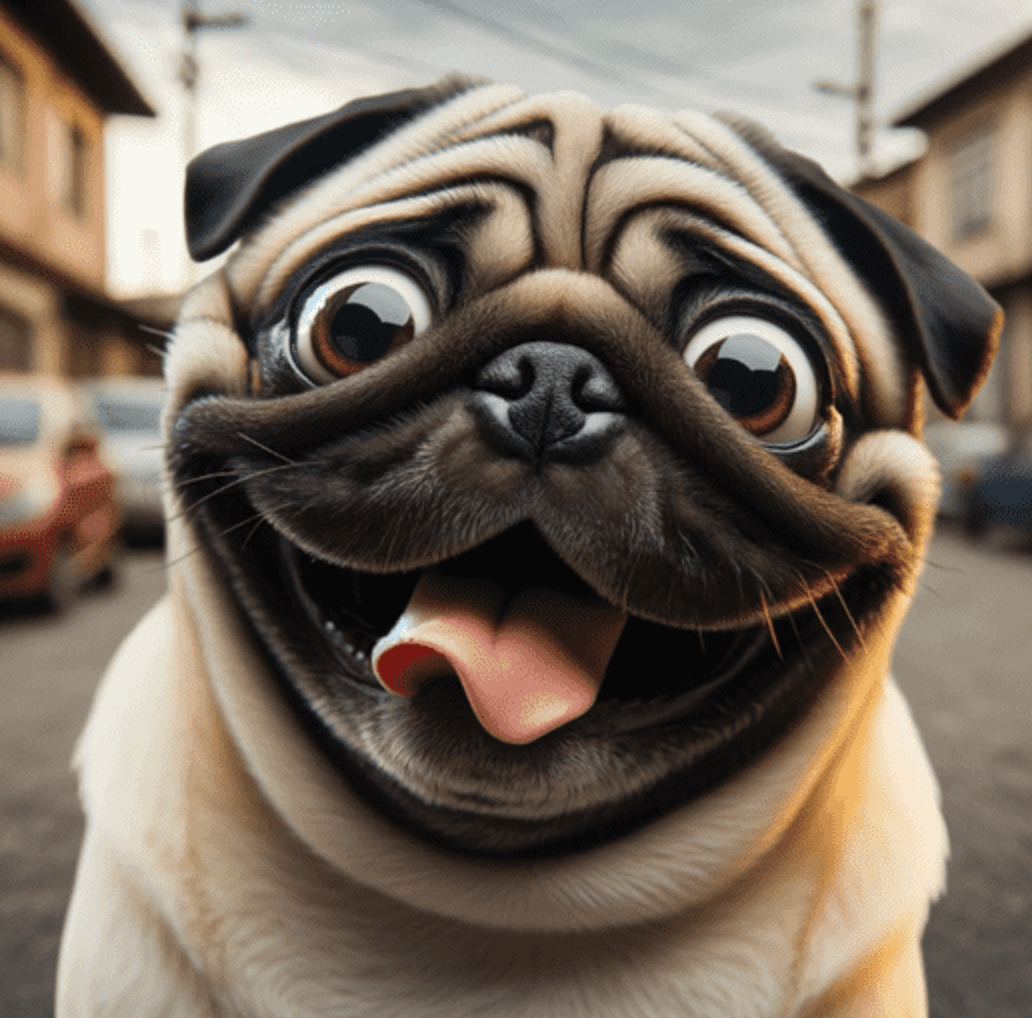- Why Pug Leash Training Matters
- Understanding Why Pugs Pull on Leash
- Essential Commands for Leash Training
- Choosing the Right Leash and Harness for Pugs
- Training Techniques to Prevent Leash Pulling
- Dealing with Distractions on Walks
- Positive Reinforcement for Better Leash Behavior
- Pug Walking Etiquette: Training Your Pug for Public Spaces
- How to Stop Pug Leash Reactivity
- Common Leash Training Mistakes to Avoid
- The Long-Term Benefits of Good Leash Manners for Pugs
- FAQs About Pug Leash Training
- How long does it take to train a pug to walk on a leash?
- Why does my pug pull on the leash?
- Should I use a collar or harness for leash training?
- Can older pugs learn leash manners?
- How do I stop my pug from barking at other dogs during walks?
- What’s the best leash length for training a pug?
- How do I keep my pug calm in busy public spaces?
- What should I do if my pug pulls on the leash?
- How can I stop my pug from getting distracted by smells during walks?
- Can I leash train my pug without using treats?
Why Pug Leash Training Matters
Walking your pug should be an enjoyable experience for both you and your dog. However, without proper leash training, these walks can become stressful, especially if your pug is pulling, darting off toward distractions, or barking at other dogs. Leash training is an essential part of your pug’s development, and teaching them good leash manners will make daily walks smoother, safer, and more pleasant for everyone involved.
Pugs are known for their affectionate and energetic personalities, but this can sometimes translate into unwanted behavior on walks. Without proper leash training, pugs may develop habits such as pulling excessively, reacting to distractions like cars or other dogs, or getting overexcited in public spaces. By investing time in leash training, you’ll help your pug stay calm, focused, and well-behaved during walks, allowing both of you to enjoy your time together outside.
In this guide, we’ll cover everything you need to know about leash training your pug, from choosing the right equipment to preventing pulling and handling distractions. Whether you’re working with a stubborn pug or just starting with a puppy, these tips will help ensure that your pug becomes a well-mannered companion on the leash.

Understanding Why Pugs Pull on Leash
Pugs may pull on the leash for a variety of reasons, and understanding the root cause of this behavior is the first step in addressing it. While pulling on the leash is a common issue with many dog breeds, pugs often exhibit this behavior due to their excitement or natural curiosity.
Excitement and Overstimulation
Pugs are easily excited, especially during walks where there are plenty of new sights, smells, and sounds. This overstimulation can lead to pulling as they try to rush toward whatever has caught their attention.
- Behavior Insight: Excitement-based pulling is often most noticeable at the start of the walk when your pug is eager to get moving. If your pug is pulling to reach a specific destination, they’re likely overstimulated by their surroundings.
Lack of Focus
Pugs can easily lose focus during walks, especially if they haven’t been properly trained to pay attention to their owner. When a pug is distracted by something more interesting than the person holding the leash, they may start pulling to reach whatever has caught their attention.
- Tip: Training your pug to focus on you during walks can help prevent this type of pulling. Using commands like “look” or “focus” with treats can reinforce the idea that paying attention to you is more rewarding than distractions.
Fear or Anxiety
Sometimes, pugs pull on the leash because they are anxious or afraid of something in their environment. This can happen when they encounter unfamiliar dogs, people, or loud noises. Fear-based pulling is usually accompanied by other signs of anxiety, such as whining or trying to hide.
- Tip: If your pug is pulling out of fear, it’s important to address their anxiety with positive reinforcement. Gradually desensitize them to the things that scare them, and use calming techniques to make walks more comfortable for them.
Pulling Cause | Solution |
Excitement | Start walks calmly and use rewards for slow, steady walking. |
Lack of Focus | Teach focus commands like “look” or “watch me.” |
Fear or Anxiety | Use desensitization and positive reinforcement. |
Essential Commands for Leash Training
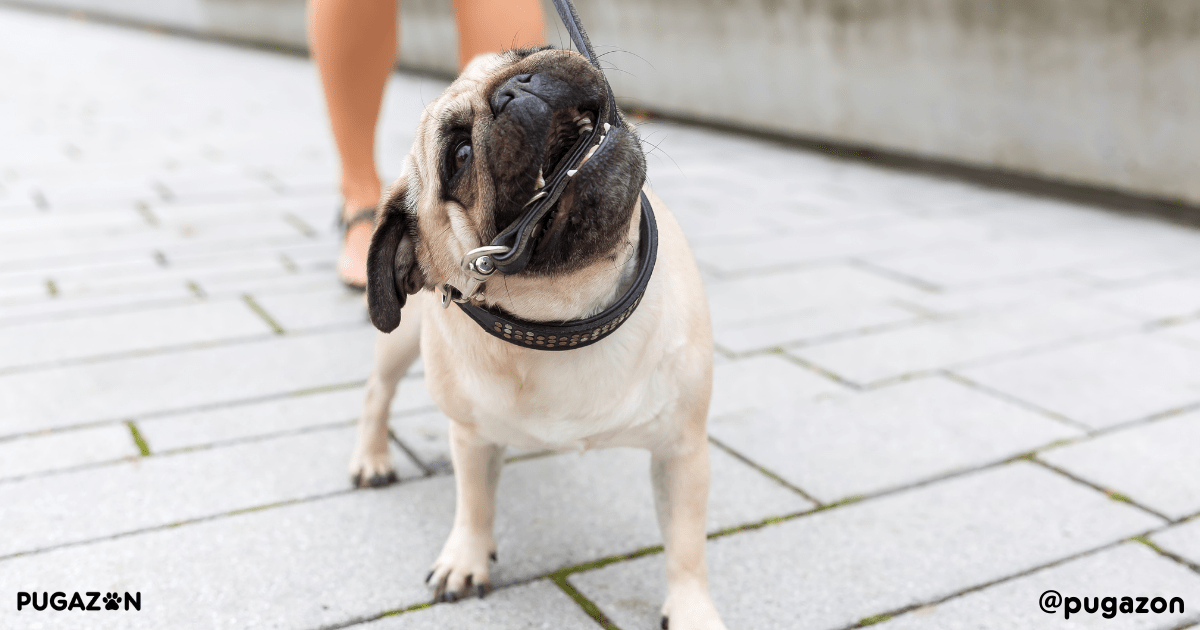
Separation anxiety is one of the most common behavioral issues in pugs. Given their strong attachment to their owners, pugs may feel distressed when left alone, even for short periods. This anxiety can lead to destructive behavior, excessive barking, or even physical distress. Thankfully, separation anxiety can be managed through behavior modification and training.
“Heel” Command
The “heel” command teaches your pug to walk beside you without pulling or darting off. This is one of the most important commands for pug leash training, as it helps your pug stay calm and in control.
- Step 1: Start by walking with your pug on a short leash. As soon as they begin to pull ahead, stop walking and bring them back to your side.
- Step 2: Say “heel” and reward them with a treat when they are walking calmly beside you.
- Step 3: Practice this consistently on every walk, gradually increasing the distance and duration of walking in the “heel” position.
“Leave It” Command
Pugs are curious by nature, and they may try to lunge at or pick up objects they encounter on walks. The “leave it” command is essential for preventing your pug from grabbing harmful or unwanted items while walking.
- Step 1: Hold a treat in one hand and show it to your pug. When they try to grab it, close your hand and say “leave it.”
- Step 2: Once they stop trying to grab the treat, reward them with a different treat or praise.
- Step 3: Use this command whenever your pug tries to pick up something inappropriate on walks, and reward them for listening.
“Stay” Command
The “stay” command is useful for keeping your pug calm when stopping at intersections, meeting other dogs, or waiting for your next instruction. This command reinforces patience and helps prevent pulling or darting.
- Step 1: Ask your pug to sit, then hold your hand up and say “stay.”
- Step 2: Take a few steps back, and if your pug stays in place, reward them with a treat.
- Step 3: Gradually increase the duration and distance of the “stay” command during walks.
Command | How to Teach It |
Heel | Keep the leash short and reward calm walking by your side. |
Leave It | Use a treat to teach your pug to ignore distractions. |
Stay | Reinforce patience by rewarding your pug for staying in place. |
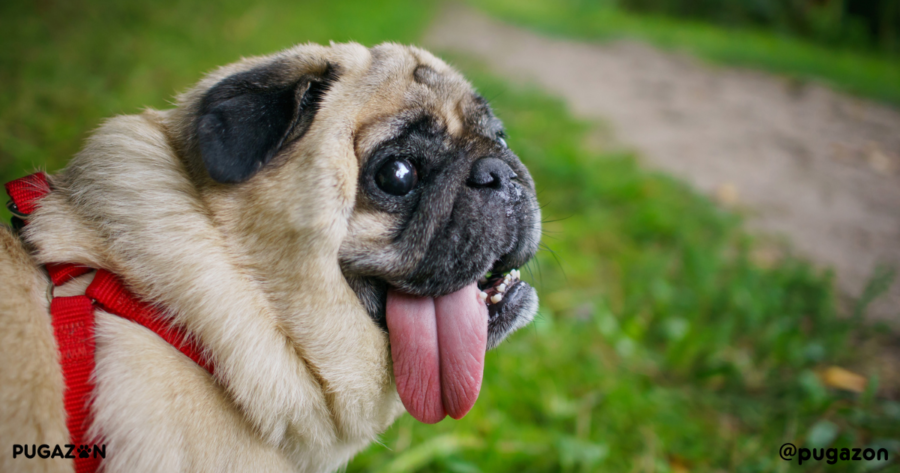
Last update on 2025-02-11 / * Affiliate links / Image source: Amazon Product Advertising API
Choosing the Right Leash and Harness for Pugs
Choosing the right leash and harness is critical for your pug’s comfort and safety. Given their unique body shape and potential respiratory issues due to their flat faces, pugs require specific equipment to ensure they don’t experience unnecessary strain or discomfort during walks.
The Importance of Using a Harness Over a Collar
Pugs are brachycephalic, meaning they have short, flat faces, which can make breathing more difficult, especially when pressure is applied to their necks. Using a collar may increase the risk of breathing issues or damage to the trachea. A harness is a better option as it distributes pressure evenly across the chest and prevents neck strain.
- Tip: Always opt for a harness designed specifically for small or brachycephalic breeds. This ensures that your pug will be comfortable while walking, even if they pull on the leash.
Types of Harnesses for Pugs
There are several types of harnesses available, each designed for different pug leash training needs. Understanding which harness works best for your pug will make a huge difference in their comfort and behavior during walks.
- Front-Clip Harness: This type of harness has a leash attachment at the front, which helps reduce pulling by redirecting your pug toward you when they pull.
- Recommended Product: Ruffwear Front Range Harness – This front-clip harness is lightweight, adjustable, and perfect for reducing pulling during walks.
- Back-Clip Harness: A back-clip harness is a good option for well-trained pugs who don’t pull. It allows more freedom of movement but doesn’t provide as much control over pulling.
- Recommended Product: Puppia Soft Dog Harness – A popular back-clip harness, comfortable and padded for daily walks.
Choosing the Right Leash
Leashes come in various lengths and materials, but the key is to choose one that provides enough control without being too restrictive.
- Standard Leash: A 4-6 foot leash is ideal for most pug walks, providing enough freedom for your pug to explore without letting them wander too far.
- Recommended Product: PetSafe Nylon Dog Leash – A simple, durable nylon leash that is perfect for daily walks and leash training.
- Retractable Leash: While retractable leashes offer more freedom, they aren’t ideal for training purposes as they provide less control. However, for well-behaved pugs, they can be used for more relaxed walks.
- Recommended Product: Flexi Classic Retractable Leash – This leash allows your pug to explore but should only be used once they’ve mastered leash manners.
Comfort and Fit Considerations
Ensuring that your pug’s harness fits properly is essential for their comfort and safety. A poorly fitting harness can cause chafing, restrict movement, or fail to prevent pulling effectively.
- Tip: Check the harness’s fit regularly to ensure it’s snug but not too tight. You should be able to fit two fingers between the harness and your pug’s body. Adjust the harness as needed to prevent discomfort.
Equipment | Recommended Use |
Front-Clip Harness | Reduces pulling by redirecting the pug toward you. |
Back-Clip Harness | Provides freedom for well-behaved pugs. |
Standard Leash | Ideal for control during training and daily walks. |
Retractable Leash | Best for well-trained pugs during relaxed walks. |
Training Techniques to Prevent Leash Pulling
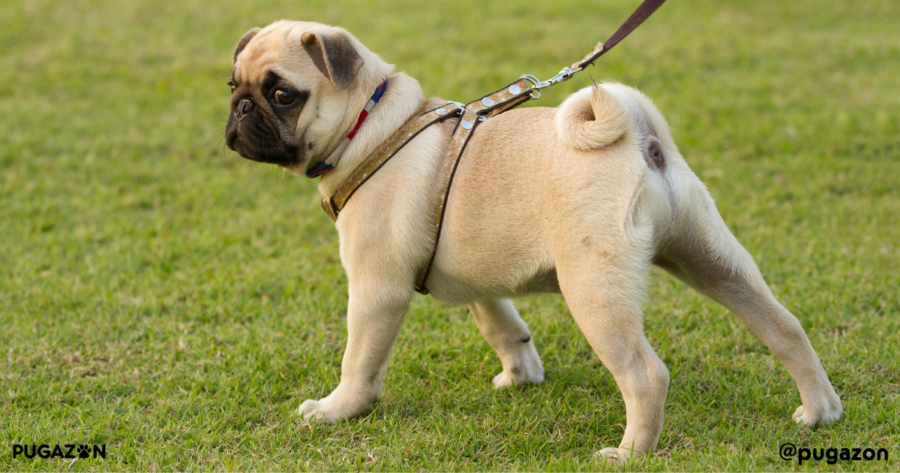
One of the most common issues pug owners face is leash pulling. Fortunately, there are several training techniques you can use to prevent pulling and teach your pug to walk calmly by your side.
The Stop-and-Go Method
The stop-and-go method is simple but effective in teaching your pug not to pull on the leash. It reinforces the idea that pulling will stop the walk, while calm walking will allow it to continue.
- Step 1: Begin walking with your pug on a leash. The moment they start to pull, stop walking.
- Step 2: Wait until your pug stops pulling and the leash becomes slack, then continue walking.
- Step 3: Repeat this every time your pug pulls. Over time, they will learn that pulling delays the walk.
Using Rewards for Loose Leash Walking
Positive reinforcement is a powerful tool for encouraging your pug to walk calmly on the leash. By rewarding them for walking with a loose leash, you reinforce good behavior.
- Step 1: Hold a treat in your hand, and use it to keep your pug focused on you as you walk.
- Step 2: Reward your pug with the treat whenever they walk beside you with a loose leash.
- Step 3: Gradually reduce the frequency of treats as your pug becomes more consistent in their behavior.
Turning in the Opposite Direction
Another effective method for stopping leash pulling is to change direction whenever your pug pulls. This technique reinforces the idea that pulling will result in a change in direction, making it less rewarding for your pug.
- Step 1: As soon as your pug starts to pull, turn around and walk in the opposite direction.
- Step 2: Use a verbal cue like “this way” to let your pug know you’re changing direction.
- Step 3: Reward your pug when they walk by your side without pulling in the new direction.
Gradual Distraction Exposure
If your pug pulls toward distractions like other dogs, squirrels, or cars, gradually exposing them to these distractions can help reduce pulling.
- Tip: Start by walking in a quiet area with minimal distractions. Gradually increase the number of distractions over time, rewarding your pug for staying focused on you and not pulling toward them.
Training Method | How It Helps |
Stop-and-Go Method | Teaches your pug that pulling halts the walk. |
Rewarding Loose Leash Walking | Reinforces calm walking with positive reinforcement. |
Changing Direction | Discourages pulling by making it less rewarding. |
Gradual Distraction Exposure | Helps your pug stay focused despite distractions. |
Always Stay Up to Date
Dealing with Distractions on Walks
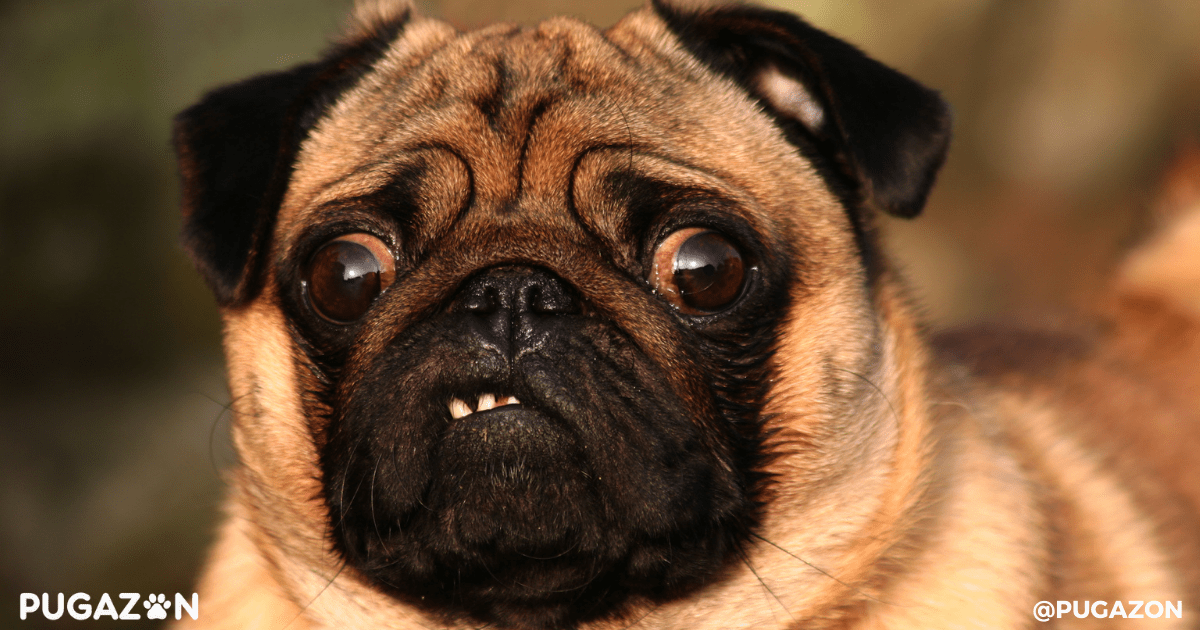
Pugs are naturally curious dogs, and it’s common for them to become distracted by new smells, sights, or other animals during walks. These distractions can lead to pulling, lunging, or stopping in their tracks. Learning how to manage distractions is a key part of successful pug leash training.
Recognizing Common Distractions
Understanding what commonly distracts your pug can help you anticipate and manage their behavior on walks. Common distractions include other dogs, wildlife, people, and even loud noises like cars or sirens.
- Tip: Pay attention to what triggers your pug’s distraction. By identifying the distractions that are most difficult for your pug to ignore, you can work on gradually desensitizing them to these stimuli.
Teaching the “Look” Command
The “look” command is a great way to get your pug’s attention back on you when they become distracted. This command helps refocus your pug and can prevent them from lunging or pulling toward distractions.
- Step 1: Hold a treat near your eyes and say “look” to get your pug’s attention.
- Step 2: When your pug looks at you, reward them with the treat.
- Step 3: Use this command whenever your pug becomes distracted on walks to bring their focus back to you.
Gradual Exposure to Distractions
If your pug struggles with distractions, it’s important to gradually expose them to more challenging environments while reinforcing calm behavior. Start in a quiet area and slowly increase the number of distractions over time.
Tip: Reward your pug for staying calm and focused in the presence of distractions, and gradually increase the difficulty as they improve.
Managing High-Intensity Distractions
For particularly challenging distractions, such as other dogs or wildlife, you may need to increase your control by shortening the leash or using a command like “heel” to keep your pug by your side.
- Tip: Practice walking past high-intensity distractions from a distance before gradually moving closer. Use high-value treats to keep your pug focused on you.
Distraction | Solution |
Other Dogs | Use the “look” command to refocus attention. |
Wildlife or Squirrels | Gradually expose your pug to distractions and reward calm behavior. |
Cars or Loud Noises | Keep the leash short and use the “heel” command for control. |
Positive Reinforcement for Better Leash Behavior
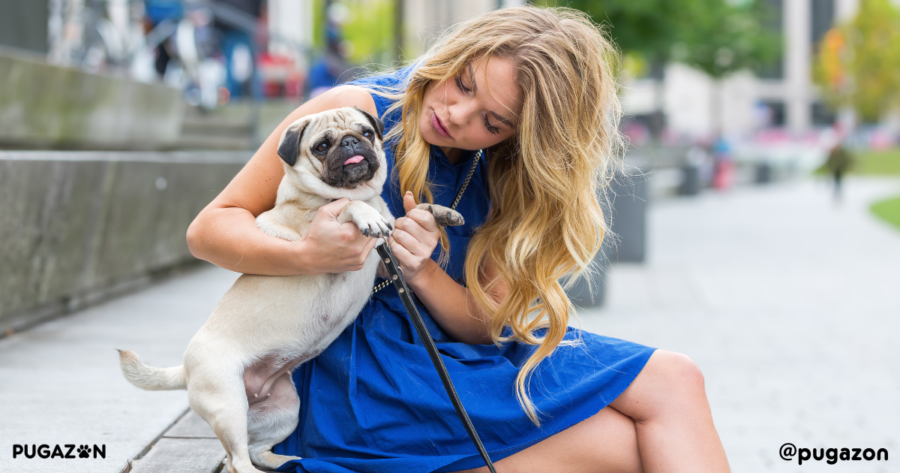
Positive reinforcement is one of the most effective training techniques for improving leash behavior in pugs. By rewarding good behavior, you encourage your pug to walk calmly by your side, making walks more enjoyable for both of you. Pugs respond particularly well to rewards, whether it’s treats, toys, or praise, making positive reinforcement an ideal approach especially when it comes to pug leash training.
Why Positive Reinforcement Works for Pugs
Pugs are food-motivated, which means they are more likely to respond to training when it’s associated with rewards. Positive reinforcement helps reinforce the behaviors you want to see, like walking calmly or not pulling on the leash, by giving your pug something they love—whether it’s a treat, a favorite toy, or praise.
Tip: Keep training treats small and healthy to prevent weight gain while still providing a rewarding experience.
Rewarding Good Leash Behavior
Whenever your pug walks calmly beside you without pulling, use positive reinforcement to reward them. This can be done by giving them a treat, offering praise, or allowing them to briefly explore a nearby area.
- Step 1: Start by rewarding your pug every few steps when they walk with a loose leash.
- Step 2: Gradually increase the distance between rewards as your pug improves.
- Step 3: Use verbal praise like “good job” or “yes” to reinforce the behavior alongside treats.
Using Toys and Play as Rewards
Some pugs may respond better to play or toys rather than treats. If your pug is more motivated by toys, use short play sessions or their favorite toy as a reward for good leash behavior.
- Tip: Incorporate a brief game of tug-of-war or fetch at the end of a successful walk to reward your pug for staying calm and focused.
The Importance of Timing in Positive Reinforcement
The key to effective positive reinforcement is timing. Rewards must be given immediately after the desired behavior to help your pug make the connection between the behavior and the reward.
- Tip: Carry treats in a pouch for easy access, and be ready to offer praise or rewards as soon as your pug walks without pulling or responds to a command.
Positive Reinforcement Method | How It Helps |
Treats | Reinforces good behavior with something pugs love. |
Toys | Provides alternative rewards for pugs that love play. |
Verbal Praise | Offers immediate feedback and encourages good behavior. |
Pug Walking Etiquette: Training Your Pug for Public Spaces
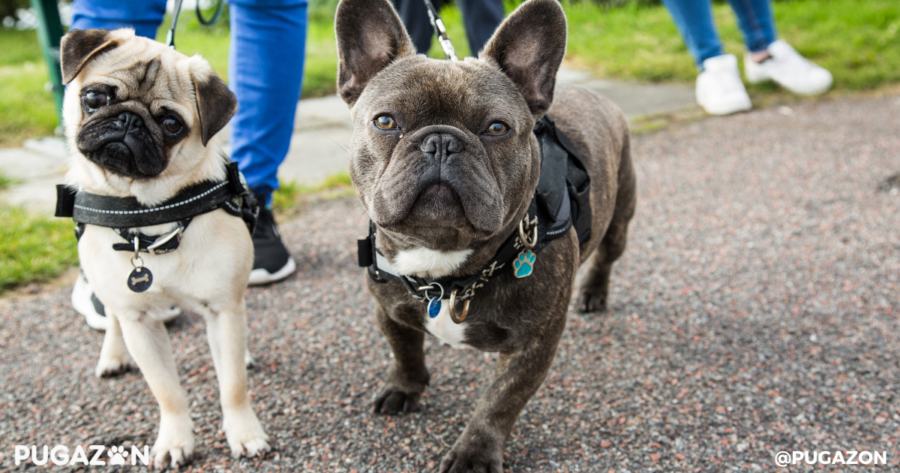
Taking your pug for a walk in public spaces, like parks or busy streets, presents unique challenges. Teaching proper walking etiquette is essential to ensure your pug remains calm, respectful, and well-behaved, no matter where you go. This section focuses on tips for managing your pug in public areas and ensuring they are polite and calm around other people and dogs.
Teaching Calm Behavior Around Other Dogs
When in public spaces, pugs often get excited when they see other dogs. It’s important to teach your pug how to remain calm and polite when passing other dogs on the leash. This will provide long term pug leashing training benefits as they become more use to new dogs and surroundings.
Tip: Use the “look” command to redirect your pug’s focus back to you when approaching other dogs. Reward them for staying calm and not lunging or barking.
Managing Over-Excitement Around People
Pugs are social animals and often get excited when they meet new people. However, over-excitement can lead to jumping, pulling, or barking. Teaching your pug to stay calm when greeting people is key to proper walking etiquette.
- Tip: Use the “sit” command to have your pug sit before being allowed to greet someone. This helps prevent jumping and reinforces good manners.
Training Patience in Busy Areas
Public spaces can be overwhelming for pugs, especially when there are lots of distractions like children, other pets, or loud noises. Teaching your pug to stay calm and patient in busy environments will make your walks smoother.
- Step 1: Start by walking your pug in quieter areas, gradually introducing busier spaces over time.
- Step 2: Use the “stay” command to keep your pug in place when you need to stop in a crowded area.
Step 3: Reward your pug for remaining calm and focused during these situations.
Picking Up After Your Pug
Proper walking etiquette also involves being a responsible pet owner. Always carry waste bags and clean up after your pug to ensure that public spaces remain pleasant for everyone.
Public Space Situation | Etiquette Training Tip |
Other Dogs | Use the “look” command to maintain focus on you. |
Meeting New People | Teach “sit” to prevent jumping or pulling. |
Busy Public Areas | Practice the “stay” command for better control. |
How to Stop Pug Leash Reactivity
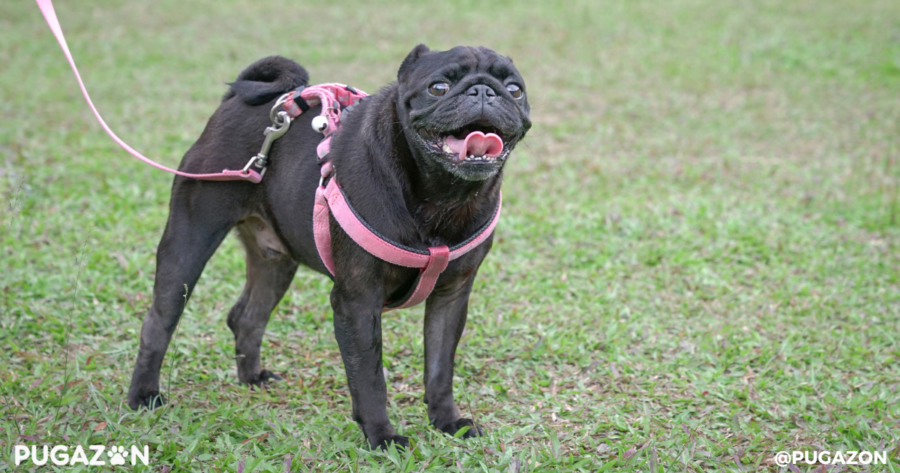
Leash reactivity occurs when your pug becomes overly excited, anxious, or aggressive when they see other dogs or distractions during walks. This behavior often results in lunging, barking, or trying to escape the leash. While leash reactivity can be frustrating, it can be managed with proper training and patience.
Understanding Leash Reactivity
Leash reactivity is usually triggered by fear, excitement, or frustration when a pug is restricted on the leash but wants to interact with something in their environment. It’s important to understand the cause of your pug’s reactivity to address the behavior effectively.
- Tip: Pay attention to your pug’s body language. Signs of leash reactivity include pulling toward the trigger, barking, and raised hackles.
Using Desensitization and Counter-Conditioning
Desensitization involves gradually exposing your pug to the trigger (such as another dog) at a distance, while counter-conditioning helps them associate the trigger with a positive outcome, like a treat.
- Step 1: Start by walking your pug at a distance from the trigger, rewarding calm behavior with treats.
- Step 2: Gradually decrease the distance over time, continuing to reward your pug for calm behavior.
- Step 3: Use counter-conditioning by offering treats when your pug sees the trigger, helping them associate it with something positive.
Redirecting Attention Away from the Trigger
When your pug becomes reactive, it’s important to redirect their attention back to you to prevent escalation. Commands like “look” or “focus” can help break their fixation on the trigger.
- Step 1: Use the “look” command to get your pug’s attention when they start reacting.
- Step 2: Reward your pug when they successfully break their focus on the trigger and look at you.
Avoiding High-Stress Situations
While you’re working on leash reactivity, it’s important to avoid putting your pug in situations that may trigger their reactivity. This allows you to gradually build their confidence and prevent setbacks in training.
Reactivity Trigger | Solution |
Other Dogs or Animals | Use desensitization and counter-conditioning techniques. |
Loud Noises or Fast Movements | Redirect attention using the “look” command. |
High-Stress Environments | Avoid high-stress areas until your pug improves. |
Always Stay Up to Date
Common Leash Training Mistakes to Avoid
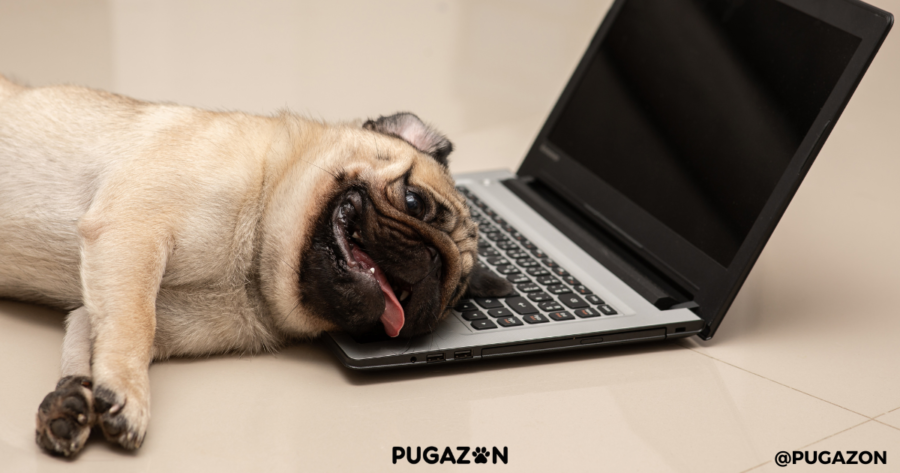
Training your pug to walk calmly on a leash requires consistency and patience, but many owners unintentionally make mistakes that hinder their progress. By understanding these common pitfalls, you can avoid them and set your pug up for success.
Inconsistent Training
One of the most common mistakes is inconsistency. If some family members allow the pug to pull while others enforce good behavior, your pug will receive mixed messages and struggle to understand what’s expected.
- Solution: Ensure that everyone in the household uses the same commands and enforces the same rules during walks. Consistency helps your pug learn faster and avoid confusion.
Using a Collar Instead of a Harness
As mentioned earlier, pugs are brachycephalic, and using a collar can put unnecessary strain on their necks, especially if they pull. This can lead to respiratory issues and discomfort.
- Solution: Always use a well-fitting harness instead of a collar for leash training. A harness distributes pressure more evenly across your pug’s body, reducing the risk of injury.
Failing to Reinforce Good Behavior
Many owners forget to reward their pug for good behavior during walks. Positive reinforcement is key to helping your pug associate calm walking with rewards, making it more likely that they will continue the behavior.
- Solution: Keep treats or toys handy during walks, and reward your pug when they walk calmly by your side or respond to commands like “heel” or “look.” This will reinforce the behavior you want to see.
Pulling Back on the Leash
When a pug pulls, many owners instinctively pull back on the leash to regain control. Unfortunately, this can create a “tug of war” situation, making your pug pull harder in response.
- Solution: Instead of pulling back, stop walking when your pug pulls. Wait until they stop and the leash becomes slack before continuing. This teaches your pug that pulling will not get them where they want to go.
Allowing Your Pug to Set the Pace
If your pug is allowed to walk ahead or set the pace during walks, they may assume that they’re in control, which can lead to more pulling and reactive behavior.
- Solution: Always set the pace of the walk. Keep your pug beside or slightly behind you, using commands like “heel” to keep them at your side.
Mistake | Solution |
Inconsistent Training | Ensure everyone uses the same commands and rules. |
Using a Collar | Switch to a harness to prevent respiratory issues. |
Failing to Reward Good Behavior | Use treats and praise to reinforce calm walking. |
Pulling Back on the Leash | Stop walking when your pug pulls, instead of pulling back. |
Letting the Pug Set the Pace | Use “heel” to keep your pug walking at your side. |
The Long-Term Benefits of Good Leash Manners for Pugs
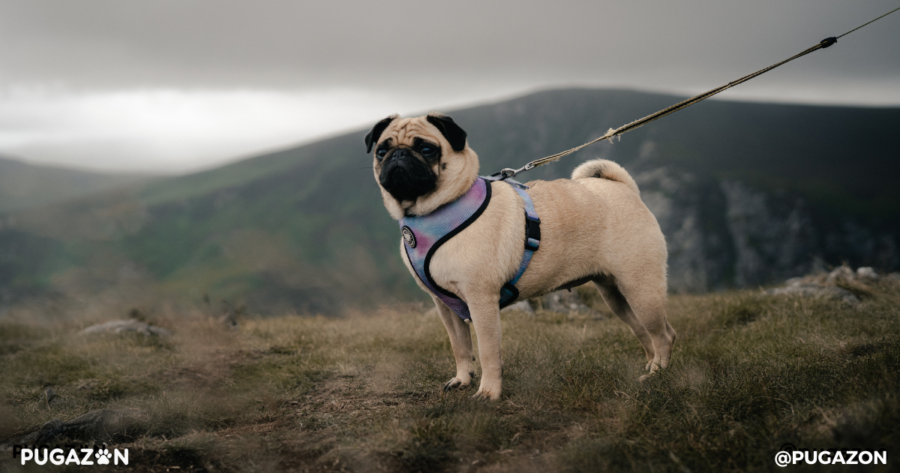
Teaching your pug proper leash manners has long-term benefits that extend beyond just enjoyable walks. Good leash behavior contributes to your pug’s overall well-being, mental health, and strengthens the bond between you and your dog.
Less Stress for You and Your Pug
Walks can be stressful when your pug pulls, barks, or reacts to distractions. However, once your pug learns proper leash manners, walks become more relaxing and enjoyable for both of you. A calm, well-behaved pug makes outings less stressful and more peaceful.
- Tip: Leash training isn’t just about control—it’s about creating a positive, enjoyable experience for both you and your pug. A well-trained pug is more likely to relax and enjoy walks without anxiety or stress.
Improved Physical Health
Regular walks are essential for your pug’s physical health, and leash training helps ensure that these walks are safe and effective. Pugs that pull too much on walks are more prone to injuries or respiratory issues, especially if they’re using a collar.
- Tip: A pug with good leash manners can enjoy longer, more frequent walks, which contribute to their overall physical fitness and help prevent obesity.
Stronger Bond with Your Pug
Leash training is a great opportunity to build a stronger bond with your pug. As you work together to achieve better behavior on walks, your pug will learn to trust you more and look to you for guidance in new or challenging situations.
- Tip: Consistently using positive reinforcement during leash training will help your pug associate you with rewards, strengthening your relationship.
Better Socialization
Pugs with good leash manners are easier to socialize with other dogs and people. Proper leash behavior allows your pug to interact politely in public spaces, making them more confident and well-adjusted.
- Tip: A well-socialized pug is less likely to exhibit fear, anxiety, or aggression when meeting new people or dogs during walks. This opens up more opportunities for fun outings and interactions.
Easier Management in Public Spaces
Good leash manners make it easier to manage your pug in busy or crowded environments. Whether you’re walking through a park, attending an outdoor event, or visiting the vet, a well-behaved pug on a leash is less likely to cause disruptions or stress.
Long-Term Benefit | Why It Matters |
Less Stress on Walks | Walks become more relaxing and enjoyable for both. |
Improved Physical Health | Regular walks with good leash behavior contribute to fitness. |
Stronger Bond | Training reinforces trust and strengthens your relationship. |
Better Socialization | Good leash manners allow for positive interactions with other dogs and people. |
Easier Management in Public | Calm behavior makes outings and public visits smoother. |
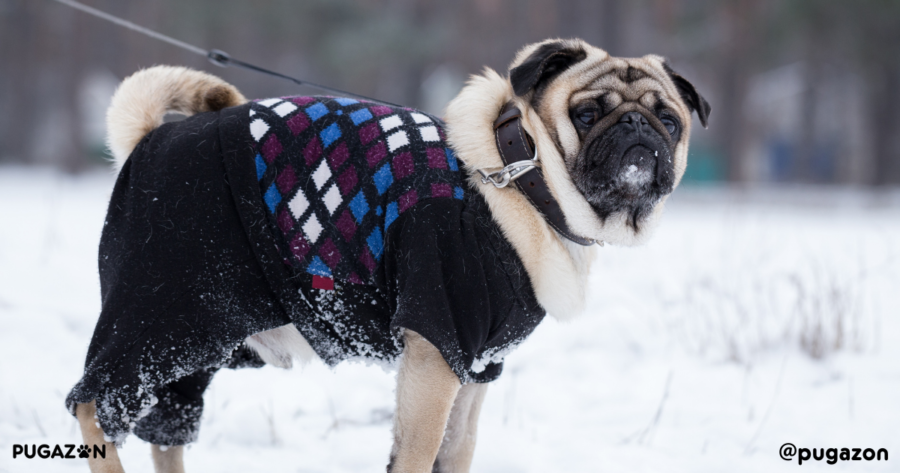
FAQs About Pug Leash Training
The time it takes to train a pug to walk properly on a leash varies. Puppies may pick up the basics in a few weeks, while older pugs with ingrained habits may take longer—around 2-3 months with consistent training. The key is patience and consistency.
Pugs may pull on the leash out of excitement, curiosity, or anxiety. Identifying the cause of the pulling is important for addressing the behavior. Training techniques like the stop-and-go method or using a front-clip harness can help reduce pulling.
A harness is always the better option for pugs, as it reduces pressure on their necks and helps prevent respiratory issues. Harnesses also give you more control during walks, making leash training easier.
Yes! While it may take a bit more patience, older pugs can learn leash manners with the right training techniques. Start with short, low-distraction walks, and use positive reinforcement to encourage good behavior.
Leash reactivity can be managed by teaching the “look” or “focus” command to redirect your pug’s attention away from other dogs. Use treats to reward calm behavior when passing other dogs.
A standard 4-6 foot leash is ideal for leash training, as it gives you enough control while still allowing your pug to explore. Retractable leashes are not recommended for training purposes.
Teach your pug the “stay” and “look” commands to help them remain calm and focused in crowded areas. Gradually expose them to busier environments, rewarding calm behavior with treats.
When your pug pulls, stop walking immediately. Wait until the leash becomes slack, then continue walking. Over time, your pug will learn that pulling slows down the walk.
Pugs are naturally curious about new smells, but teaching the “leave it” command can help you regain control when your pug becomes overly focused on distractions.
While treats are an effective way to reinforce good behavior, you can also use praise, toys, or playtime as rewards if your pug is more motivated by these alternatives.


